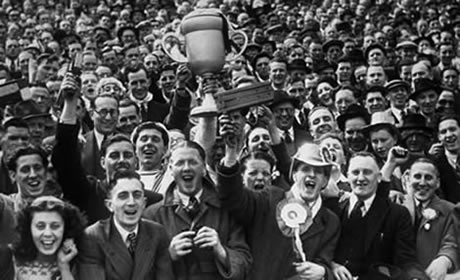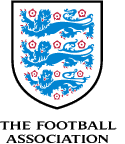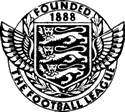FC - Football becomes big business
Background

Roots
Football is often regarded as the people's game but it was in public schools and universities that the modern game was developed.
A game that can trace its roots as far back to the fourteenth century where opposing villages and towns battled over an inflated bladder, fighting and maiming each other as players raged through the streets. The nineteenth century saw games with rudimentary sets of rules regarding taking and attacking opposing villages territory - these being the 'goal'. The industrial revolution, the formation of a police force and the shift of people into the cities saw the end to these games.
 They remained in the privileged and cocooned world of the public school system however, and with the reforms brought in by headmasters the game became toned down and regulated. Football was seen as a method of encouraging sportsmanship and teamwork. It was here that The Football Association (The F.A.) was formed in 1863 as a means of creating a standard set of rules. It was a firmly amateur organisation that believed in the game being played for the competition and the sport alone.
They remained in the privileged and cocooned world of the public school system however, and with the reforms brought in by headmasters the game became toned down and regulated. Football was seen as a method of encouraging sportsmanship and teamwork. It was here that The Football Association (The F.A.) was formed in 1863 as a means of creating a standard set of rules. It was a firmly amateur organisation that believed in the game being played for the competition and the sport alone.
Professionalism
Graduates from the universities, as well as churches and schools promoted the sport, as it would encourage physical health and moral values. The game caught on massively with clubs sprouting up across the country - especially in the North and Midlands. As the game popularised and competition increased between clubs, illegal payments started to be made to players. In 1885, and against its beliefs, the F.A. was forced by threat of a breakaway to legalise professionalism, but in doing so it continued to regulate the excesses and protect the game from the effects of commercialism.
 Now that clubs were able to pay players, they needed regular fixtures in order provide an income. It was with this in mind that William McGregor of Aston Villa formed the Football League in 1888, starting with 12 clubs. From the start, the league thought it important to maintain equity between the clubs that played in it. Gate receipts were shared between clubs that meant the bigger clubs couldn't dominate just because they could make more money through the gates. Later a four percent levy of overall gate money was collected into a central pot and shared equally between the clubs. Another action that maintained equity between clubs was that of a maximum wage. However this is now seen today as a restriction by the upper class F.A. on the working class players, and was eventually scraped in 1961.
Now that clubs were able to pay players, they needed regular fixtures in order provide an income. It was with this in mind that William McGregor of Aston Villa formed the Football League in 1888, starting with 12 clubs. From the start, the league thought it important to maintain equity between the clubs that played in it. Gate receipts were shared between clubs that meant the bigger clubs couldn't dominate just because they could make more money through the gates. Later a four percent levy of overall gate money was collected into a central pot and shared equally between the clubs. Another action that maintained equity between clubs was that of a maximum wage. However this is now seen today as a restriction by the upper class F.A. on the working class players, and was eventually scraped in 1961.
Professional football continued to thrive, and by 1921 the Football League had four divisions. Clubs did make money, but in an amateurish way. The majority of a clubs income was from that of admission charges and that made by in-ground catering. Clubs outgoings were spent on player's wages (which were capped) and so little money was spent on grounds, which remained basic.
Whilst the amateur F.A. governed the game and ran the national team, the professional Football League was merely a competition registered with The F.A. that ensured clubs had regular fixtures and both organisations maintained a largely harmonious relationship.
The power of the league strengthens the Association and the authority of the Association safeguards the league
William Pickford, F.A. President 1937/8
This relationship was to deteriorate after the Second World War with the breakdown of the class system. As the upper class F.A. began to waver, the Football League became more powerful, and arguments between the two became more common - club versus country often being a catalyst.
FC/plc: Football Vs Business
A small text I created to aid research and for use in my Final Major Project in Year 3 of my degree programme. Written May 2002.
FC - Football Becomes Big Business
plc - The Business of Football
Conclusion
Shop with Amazon.co.uk
- The Football Business
- David Conn
